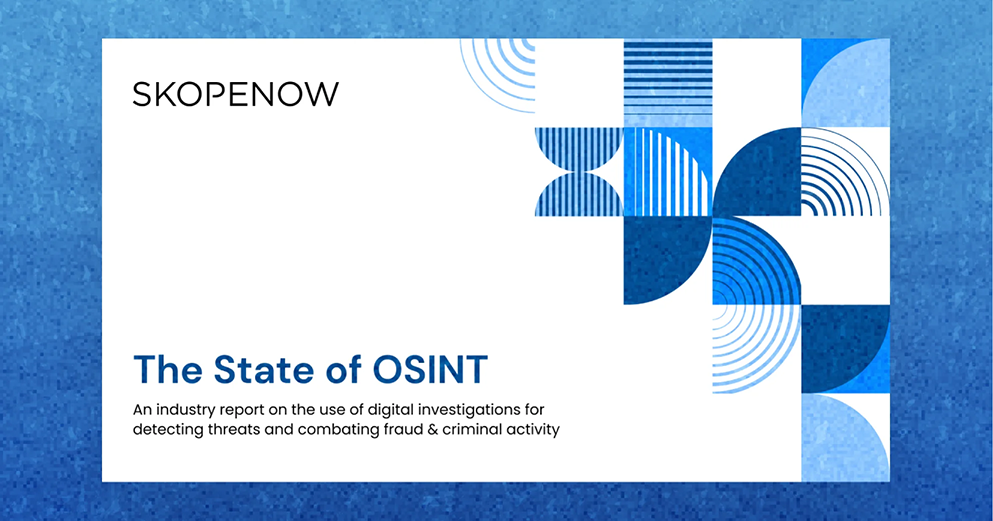January 16, 2025
Tackling the Flow of Fentanyl into the US with OSINT
LC Cook
Vice President of Public Sector
Synthetic substances have profoundly impacted the illegal drug market, leading to devastating consequences across the US. Fentanyl, an extremely potent synthetic opioid, is a prime example of this crisis, being responsible for over half of the approximately 112,00 drug deaths in the US in 2023. Although initially developed in 1959 as a prescription pain reliever, illicit production has surged, primarily within the US, for recreational purposes.
In response to this escalating crisis, the Biden Administration prioritized combating the overdose epidemic in his Unity Agenda for the Nation in November 2023. This included a concerted effort to dismantle drug trafficking networks and disrupt the illicit trade of fentanyl and its precursor chemicals. A significant part of this initiative involves renewing bilateral cooperation with China on counternarcotics operations to curtail the distribution of fentanyl precursor chemicals.
Addressing the fentanyl crisis demands an international approach, as the drug and its precursor chemicals enter the US from various global sources. In 2023, border authorities seized over 43,000 pounds of fentanyl, on top of the more than 1.5 million kilograms of precursor chemicals seized since 2021. Despite these substantial interdictions, the fentanyl market continues to thrive.
China stands as the largest producer of fentanyl and its precursor chemicals, while India has become a favored alternative for producers seeking to diversify their manufacturing locations, particularly following Beijing's enactment of stricter regulations on fentanyl precursor chemicals. After initial production, precursor chemicals are then trafficked to cartels in the US and Mexico, such as the Sinaloa Cartel, the Cartel Jalisco Nueva Generación, and the Los Chapitos, who process the drug into counterfeit pills for the US market.
Understanding the Flow of Precursors
Mexican cartels employ various smuggling techniques to transport fentanyl and its precursors into the US. Some strategies include recruiting US citizens to conceal these substances in their vehicles or hiding them within cargo legally entering the United States. Consequently, investigators combating fentanyl production and distribution need the right data sources to crack down effectively. Those sources include maritime traffic data, border traffic cameras, and records of border security incidents. These data sources are publicly available either freely or commercially, but reviewing them manually in real time is both time and resource-intensive.
Beyond border areas, the illicit sale of fentanyl precursors is also prevalent online, with vendors openly advertising them for sale via standard chemical terminology. Investigators can identify individuals offering these precursors on major social media platforms by searching for Chemical Abstract Services (CAS) registry numbers using keyword strings like “CAS 79099-07-3” OR “CAS 103-63-9” OR “CAS 39742-60-4” OR “CAS 21409-26-7” OR “CAS 1609-66-1” OR “CAS 23056-29-3” OR “CAS 103-63-9.” Searching chemical names in English and Mandarin, like “N-Boc-4-piperidone” OR “N-叔丁氧羰基-4-哌啶酮” OR “(2-Bromoethyl)benzene” OR “β-溴苯乙烷” OR “N-Phenethyl-4-piperidone” OR “N―苯乙基―4―哌啶酮,” can be very effective.


Often, images and videos containing email addresses, phone numbers, and usernames direct potential customers to ‘secure’ messaging apps to facilitate purchases. This ensures that law enforcement agencies are unable to easily determine who is purchasing the chemicals or the scale of the operation.
When done manually, this research requires constantly scanning every relevant data source for new posts. To streamline this process, many organizations are implementing automated solutions to flag the use of specific keywords, such as CAS numbers, across posts on every relevant social media platform and message board.
Investigating Criminal Networks
To disrupt the fentanyl market effectively, large law enforcement and government agencies must target members of organized crime groups involved in the production or trafficking of this synthetic drug, rather than focusing solely on small-scale dealers. This strategy offers a promising opportunity to sever the drug's supply chain.
One effective approach investigators are adopting involves leveraging publicly available information (PAI) related to cartel members. Many criminals frequently use social media and other online platforms in the same manner as ordinary citizens. This public data can be instrumental in building a robust criminal case. Using social media and other publicly available information sources, investigators can search suspects' names or research anonymous phone numbers found in seized devices to connect the dots and identify ringleaders.
While open-source intelligence alone is often insufficient for dismantling criminal networks involved in the manufacture and distribution of fentanyl, it can often be used in conjunction with other investigative methods to understand criminal activity and provide the foundational information required to build stronger cases.
Automating PAI Processing and Disrupting the Fentanyl Market
The Biden administration has allocated substantial funding to support law enforcement and government agency efforts to leverage new technology in combating illicit fentanyl, including an investment of more than $1.2 billion in 2022.
Skopenow offers a comprehensive suite of OSINT solutions essential for swiftly investigating and disrupting the sale of fentanyl and its precursors. Our platform empowers organizations with automated technology to better disrupt fentanyl trafficking operations, supporting mission objectives and enhancing public safety.

Our situational awareness solution, Grid, enables investigators to identify fentanyl-related communications efficiently. Furthermore, our investigation solutions, Workbench and Link Analysis, aid investigations by forensically collecting and analyzing publicly available information on identified threat actors, identifying links to criminal organizations, and collating evidence into court-ready reports. Ultimately, Skopenow assists public sector organizations in collecting better data and enhancing operational excellence.
Join over 1,500 organizations, including numerous large government and law enforcement agencies, that rely on Skopenow to make better decisions. Schedule a personalized demo today at www.skopenow.com/try to explore our platform's transformative potential.


